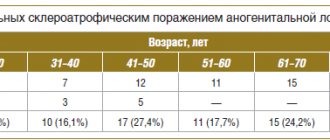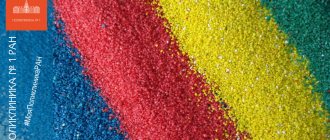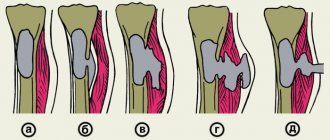PREVENTIVE MEASURES
In order to eliminate the risk of disease, special care should be taken to ensure that the area where you live is free of animal and human feces. Clean outdoor latrines in a timely manner to prevent rats from eating human excrement. Some types of worms are adversely affected by ultraviolet radiation, so you should use a spatula to loosen the soil where the child usually plays.
In your garden plot you can plant crops such as oats, peas, calendula, and lupine. Their root system secretes substances that will help destroy the larvae of worms. And, of course, you should not neglect personal hygiene. Hand washing should be a must after every contact with animals and the ground. You also need to get into the habit of working in the garden only with rubber gloves, in order to protect yourself from contact with the ground, which may contain parasites.
CAUSE OF ANKYLOSTOMIDOSIS
Helminth parasites enter the circulatory system of the human body through the feet and penetrate through the vessels into the lungs. Attempts by a person to expectorate lead to the fact that parasites enter the digestive tract with swallowed saliva, and then into the intestines. Where does their active reproduction begin? The eggs are passed along with the feces. Once in the soil, they transform into larvae and after a few days shed their protective shell. After this, they are able to penetrate human flesh, causing severe itching of the skin, redness and swelling of the skin in the area through which they penetrated. In the advanced phase of the disease, ulcers may appear on the skin, in which the top layer is lost, resulting in infections. In rare cases, under the skin you can notice traces of tracks that remain from parasites. Basically, infection occurs through the skin, but infection by eating food that may have been exposed to larvae cannot be ruled out.
Complications of strongyloidiasis
The most common complications of the disease are lesions of the gastrointestinal tract:
· malabsorption of nutrients;
· intestinal obstruction;
appendicitis, peritonitis;
· blockage of the bile ducts with the development of hepatitis and jaundice.
The lungs may develop a variety of inflammatory diseases: pleurisy, pneumonitis. An allergic reaction to the pathogen can result in obstructive bronchitis and bronchial asthma. In severe cases, bleeding and respiratory failure may develop.
If the larvae of strongyloidiasis linger in the skin tissues, the complication is chronic urticaria and multiple, wandering rashes on the skin.
From the nervous system, complications include meningitis and brain abscess.
SYMPTOMS
· At the sites of parasite penetration, itching, swelling, redness, and rash may occur. Such phenomena do not always attract the proper attention of the infected person.
· When the larvae migrate through the lungs, the infected person develops coughing attacks, provoking the development of bronchitis and pneumonia.
· The disease is accompanied by acute abdominal pain, diarrhea and diarrhea, and sudden weight loss.
· Shortness of breath, dizziness, migraine, bleeding from the nasal cavity appears,
· Physiological taste needs are distorted. Patients want to eat clay, earth, chalk.
· Patients experience severe anemia, accompanied by constant lethargy and fatigue. Painful sensations appear in the limbs, back, chest and abdomen. Unhealthy pallor of the skin and rapid heartbeat appear.
CONSEQUENCES
Once parasites enter the body, they may not reveal themselves for a long time. The incubation period for their presence can take up to two months. Symptoms depend on the route of entry into the body. Since infection usually involves a small number of parasitic worms, there are practically no symptoms. The disease can be divided into two stages - intestinal and mobile. At the first stage, when the larva has penetrated the skin, skin itching, rash, swelling at the sites of penetration are observed, and in some cases ulcers appear. Migrating along the pulmonary tract, coughing attacks are caused, and bronchitis, pleurisy and pneumonia can also develop. The duration of the mobile stage lasts up to two weeks.
At the next stage, the larva causes gastrointestinal disease. Diarrhea or constipation, vomiting, nausea appear, all signs of diarrhea are present. With a large accumulation of parasites in the intestines, swelling of the limbs occurs.
The hookworm feeds on human blood, clinging with its teeth to the intestinal mucosa. As a result, ulcers appear that bleed. Blood loss leads to anemia, disruption of the central nervous system, and children experience delays in both physical and mental development. According to the World Health Organization, due to parasitism of the worm, a patient loses about 0.1 ml per day. And if there are two hundred hookworms in the intestines, then the body’s blood loss is a thousand milliliters per day. But even with fewer parasites in the body, blood loss is noticeable, about thirty milliliters per day. Among other things, hookworms are capable of secreting a substance that prevents blood clotting. As a result, there is a sharp decrease in hemoglobin, which leads to fainting, headaches, drowsiness, abnormal blood pressure and heartbeat, decreased appetite, which leads to significant weight loss.
The organs responsible for the vital functions of the body are involved in the process of parasitism. And if this disease is left unattended, it can ultimately be fatal.
HOW DO HOOKYLOSTOMA LARVA SPREAD THROUGH THE BODY?
The larvae, entering the skin, remain there for some time. Then, through the blood vessels they enter the right atrium, and then into the lungs. There the larvae are found in small capillaries that are attached to air sacs. Over time, when the faces grow, they move into these sacs and enter the larynx through the respiratory tract. After which the person swallows them. Thus, they enter the intestines. There the larva fully matures. The length of a mature worm can reach 13 mm and a thickness of 0.6 mm.





